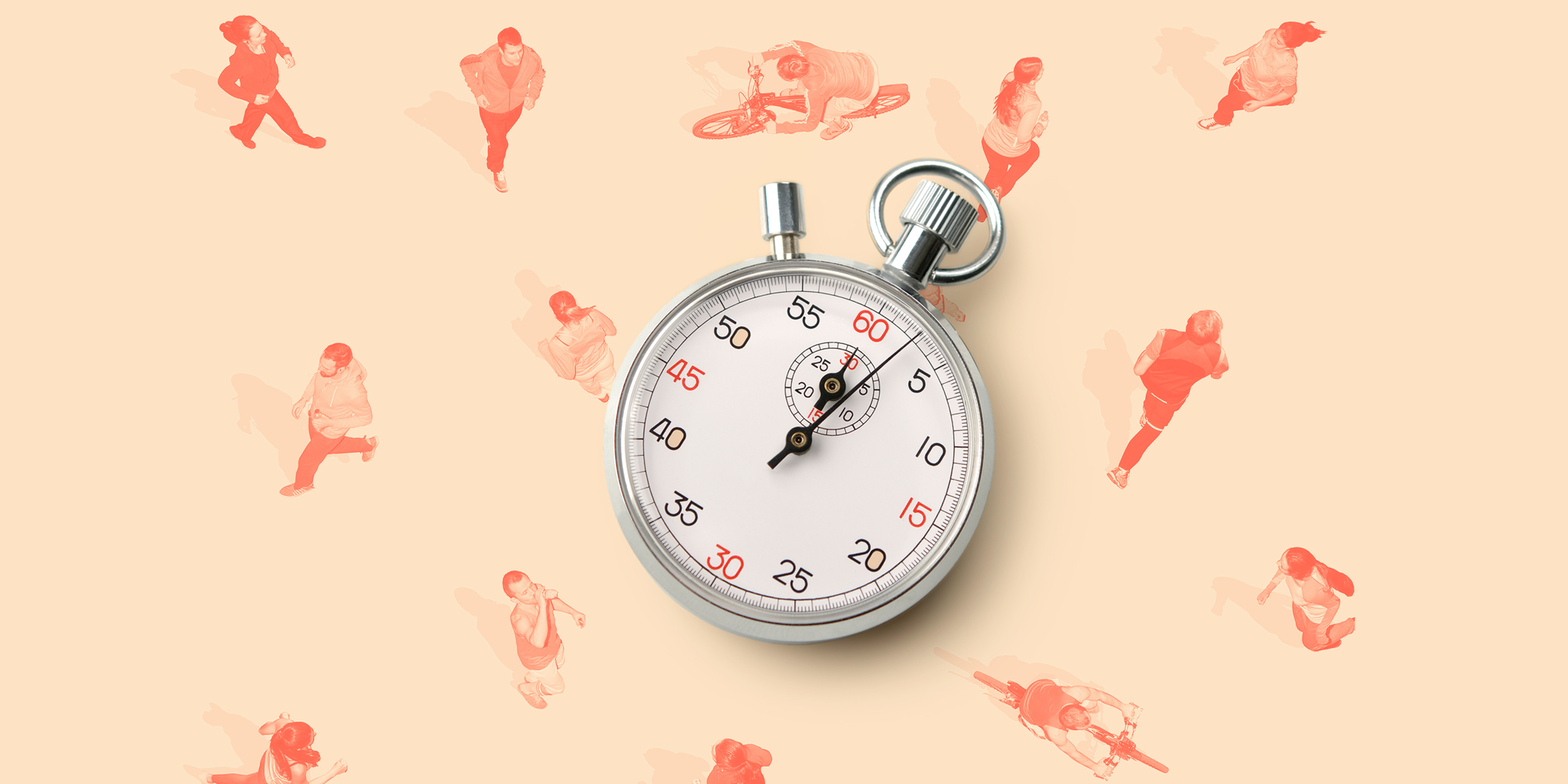Here’s How Much Exercise You Need Based on Your Age

Right now, exercise might not be on top of your to-do list. But the World Health Organization (WHO) says it should be. According to its physical activity guidelines, 1 in 4 adults (and 4 out of 5 adolescents) don’t get enough aerobic exercise. That might not sound so bad, but a lack of physical activity can increase the odds of an early death by 20 to 30%. On the flip side, exercise can be a powerful tool for prevention, proven to help protect against cardiovascular disease, diabetes, depression and anxiety. Plus it can improve thinking, learning and judgment — and even help you get a better night’s sleep.
How much movement do you need?
The recently updated WHO guidelines recommend a minimum of 150 to 300 minutes of moderate activity per week or 75 to 150 minutes of vigorous activity (or a combination of both). That’s anywhere from an hour and 15 minutes to 5 hours.
Although that might sound like a lot, if you break it down to how much exercise a day you need, it works out to less than an hour, Peter Katzmarzyk, Ph.D., associate executive director for Population and Public Health Studies at the Pennington Biomedical Research Center in Baton Rouge, Louisiana, and a member of the development group for the updated WHO report, told TODAY.
Doing “150 to 300 minutes per week averages to about 21 to 43 minutes per day,” Katzmarzyk said. Rather than focusing on recommended daily exercise, however, he explained that the group at the WHO prioritized a weekly total. “We went with a weekly total to allow people to understand that the guideline can be accumulated throughout the entire week and that it’s OK to miss a day.”
Exercising around 300 minutes a week may also offer additional benefits to those wanting to lose weight, according to a study published in Medicine & Science in Sports & Exercise. Researchers found that after 12 weeks, this amount of exercise led to a loss of nearly four pounds of body fat in study participants (participants were overweight, sedentary adults).
Targeted fitness guidance
How much you should exercise depends on a few different factors. The WHO guidelines don’t just spell out the amount and intensity of exercise needed for optimal health; they also recommend the types, namely a combination of aerobic exercise and muscle strengthening exercises. In addition to continued advice for children, adolescents, adults and seniors, the report makes activity recommendations for:
Pregnant and postpartum women.
People with chronic health conditions.
People living with disabilities.
Here’s how much activity you and your family need, according to the WHO:
Children and adolescents (ages 5-17): A minimum of 60 minutes of moderate to vigorous physical activity a day. At least 3 days a week should include vigorous aerobic activity and activities that build strong muscles and bones.
Adults (ages 18-64): A minimum of 150 to 300 minutes of moderate (or 75 to 150 minutes of vigorous) aerobic activity a week. Twice-weekly muscle strengthening can provide additional benefits.
Older adults (over age 65): Seniors can follow the same guidelines as younger adults but should also include strength and balance training 2 to 3 times a week to protect against falls.
Pregnant and postpartum women: 150 minutes of moderate intensity aerobic activity per week including muscle-strengthening exercises.
People living with chronic health conditions and disabilities: These folks can benefit from the same recommendations as healthy adults and children, with modification as recommended by their physician.
How to get started with physical activity exercises
These guidelines may sound daunting, but they’re really about moving more. If you’re not sure where to begin, these tips can help:
Don’t overdo it. Carol Ewing Garber, Ph.D., an exercise physiologist and professor of movement sciences at Teachers College, Columbia University in New York City, told TODAY that beginners can start out easy. “If you have never exercised, or the thought of exercise makes you cringe, try something pleasant like stretching or an easy walk, or dance around to music that you like,” she said.
Don’t forget strength exercises. To build strength Ewing Garber recommended adding in some calisthenics, weight training or a resistance band workout.
Break it down. Vanessa M. Kercher, Ph.D., an exercise physiologist and clinical assistant professor at Indiana University in Bloomington, told TODAY that it’s not necessary to try to squeeze in all activity at once. “Identify times throughout the day to accumulate short bursts of movement to start,” she said. “If you’re successful, add in some more specific goals related to time and intensity.”
Try a family challenge. “In our family we have interchangeable daily push up and body squat goals,” said Kercher. “You can do these anytime when you’re at home whether you’re cooking or doing laundry.”
To keep kids active:
Be playful. “The key for kids is to make it fun,” says Ewing Garber. “Go outside to the park. Although chilly out, it’s still nice for kids to get out, move about and kick a ball, climb or test out their bike or scooter.”
Get creative. If you’re stuck inside, she said, try movement videos, make a dance video, play musical chairs or have a scavenger hunt.
Tailor activities to teens. “Teens are more challenging,” said Ewing Garber. “If space permits, try some foam balls to play indoor hoops or soccer.” Or go old school and send teens out to run errands on foot.
If these goals still sound overly ambitious, you’ll be happy to hear the guidelines stress that any amount of exercise is better than none. “Every adult should throw out the idea that if you’re not doing the most grueling, sweat-drenching workout for more than an hour it doesn’t count,” said Kercher. “Instead, start by taking any and every opportunity to move, in any way possible at whatever speed, for any amount of time.”
The post Here’s how much exercise you need based on your age appeared first on TODAY.
